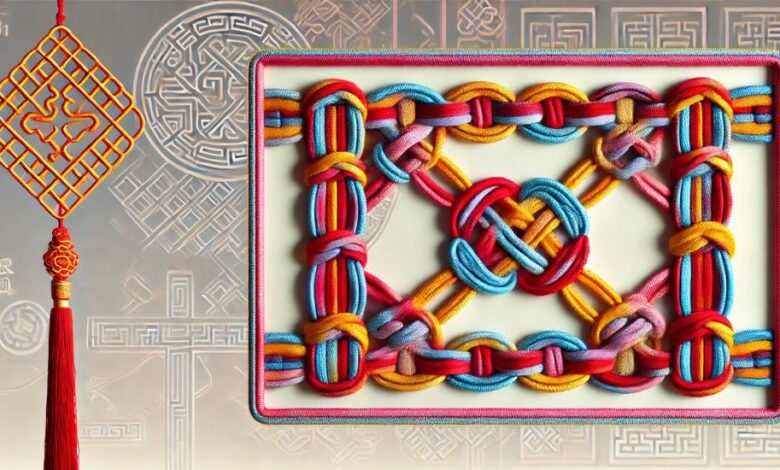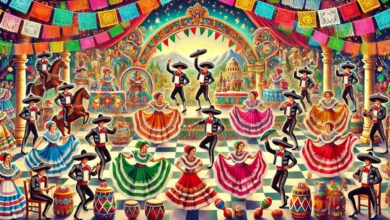Chinese Knot Art Contemporary: A Fusion of Tradition and Modernity

Chinese knot art, an ancient form of decorative craft that has been around for thousands of years, has evolved into a contemporary art form in recent times. This evolution has brought traditional knot designs into the realm of modern art, blending ancient techniques with contemporary aesthetics. Chinese knot art contemporary showcases not only the intricate craftsmanship of these knots but also how they reflect the cultural richness of China in today’s world. In this article, we will delve into the significance, techniques, and modern adaptations of this unique art form, bringing the timeless tradition of Chinese knotting into a contemporary perspective.
At USA Magzines, we are passionate about highlighting diverse cultural expressions, and Chinese knot art contemporary is a perfect example of how traditional arts continue to thrive in today’s modern world.
The History of Chinese Knot Art
Chinese knotting has its roots in ancient China, with its earliest records tracing back to the Tang and Song dynasties. Knots were primarily used as decorative items on clothing, accessories, and home decor, symbolizing various meanings, such as prosperity, longevity, and unity. Over the centuries, Chinese knot art became deeply intertwined with traditional Chinese culture, often used during festivals, ceremonies, and celebrations. Each knot carried its own significance, and the craft was passed down from one generation to another, preserving its intricate techniques.
In Chinese knot art contemporary, these traditional designs are still cherished but have been given a modern twist to align with current trends and tastes. By combining historical significance with contemporary sensibilities, today’s Chinese knot art serves as both an homage to the past and a celebration of modern creativity.
Techniques in Chinese Knot Art Contemporary
One of the defining features of Chinese knot art is its reliance on a series of basic knots, such as the “Pan Chang” knot, “Double Coin” knot, and “Button” knot. These basic knots form the foundation for more elaborate patterns and designs. Each knot is crafted from a single piece of cord or thread, and skilled artists use a combination of loops, twists, and tightening techniques to create complex and intricate designs.
In Chinese knot art contemporary, these traditional techniques are often enhanced by using modern materials, such as metallic threads, synthetic fibers, and colorful cords. Artists incorporate new elements to make the knots stand out as decorative pieces in modern homes and public spaces. Additionally, contemporary artists experiment with larger installations and three-dimensional forms, pushing the boundaries of this craft.
Cultural Significance of Chinese Knot Art Contemporary
Chinese knot art contemporary maintains its deep cultural significance, despite its modern transformations. The knots are still considered symbols of good fortune, happiness, and protection. They are often given as gifts to convey best wishes during festivals such as the Chinese New Year or weddings. In contemporary times, artists continue to infuse their creations with symbolic meanings, ensuring that this traditional craft remains culturally relevant.
The incorporation of Chinese knot art into modern interior design, fashion, and jewelry is another testament to its enduring appeal. Whether displayed as wall hangings, used as keychain charms, or incorporated into clothing designs, these knots continue to represent Chinese heritage in a way that appeals to contemporary audiences. At USA Magzines, we have seen an increased interest in showcasing these knots in modern spaces, bringing a piece of Chinese culture into everyday life.
Chinese Knot Art in Fashion and Design
One of the most exciting developments in Chinese knot art contemporary is its presence in modern fashion and design. Designers have found innovative ways to incorporate knot art into their creations, blending traditional craftsmanship with modern fashion aesthetics. These knots are often seen on clothing, accessories, and even as stand-alone art pieces.
In contemporary fashion, Chinese knots are used as embellishments on dresses, jackets, and bags. They add a unique, handcrafted element to mass-produced items, creating a balance between tradition and modernity. Some fashion designers are also experimenting with knot structures in haute couture, where elaborate knot designs take center stage on the runway.
Interior designers, too, have embraced Chinese knot art contemporary by incorporating knot wall hangings, room dividers, and furniture accents into modern homes. These knots add an artistic touch to minimalist interiors, providing a striking visual contrast that draws attention to their craftsmanship.
Chinese Knot Art Contemporary as a Form of Self-Expression
In the world of contemporary art, Chinese knotting is not just a decorative technique but also a powerful form of self-expression. Artists are using this ancient craft to convey modern-day themes and personal narratives. By reinterpreting traditional knots with new meanings, these artists challenge cultural norms and bring fresh perspectives to the art form.
For instance, some contemporary artists are using oversized knots in public installations to comment on societal issues such as environmental conservation and cultural identity. Others are creating multimedia art pieces, combining knots with other art forms such as painting, sculpture, and digital media to explore themes of connection and continuity. This fusion of old and new techniques is what makes Chinese knot art contemporary so dynamic and relevant in today’s art scene.
The Future of Chinese Knot Art Contemporary
As Chinese knot art continues to evolve, it is expected that artists will keep pushing the boundaries of this ancient craft. The future of Chinese knot art contemporary will likely see even more experimentation with materials, forms, and applications. With advancements in technology, artists may also begin incorporating digital elements into their work, creating interactive or animated knot art.
In addition to its growing popularity in the global art community, Chinese knot art contemporary will continue to play a key role in preserving cultural heritage. By adapting this traditional craft for modern times, artists ensure that the beauty and symbolism of Chinese knot art remain relevant for future generations.
At USA Magzines, we believe that showcasing and supporting the evolution of traditional arts like Chinese knotting is essential for fostering a deeper understanding of diverse cultures. Chinese knot art contemporary serves as a reminder that tradition and innovation can go hand in hand, creating a bridge between the past and the present.
Conclusion: The Legacy of Chinese Knot Art Contemporary
Chinese knot art contemporary is a fascinating blend of ancient craftsmanship and modern design. While it maintains its roots in tradition, this art form has successfully adapted to the changing times, proving its versatility and enduring relevance. From fashion to interior design to large-scale art installations, Chinese knot art continues to capture the imagination of people worldwide.
At USA Magzines, we are proud to shine a spotlight on this unique art form, highlighting how it continues to evolve while staying true to its cultural heritage. As contemporary artists explore new ways to reinterpret traditional Chinese knots, the future of this art form looks brighter than ever.




